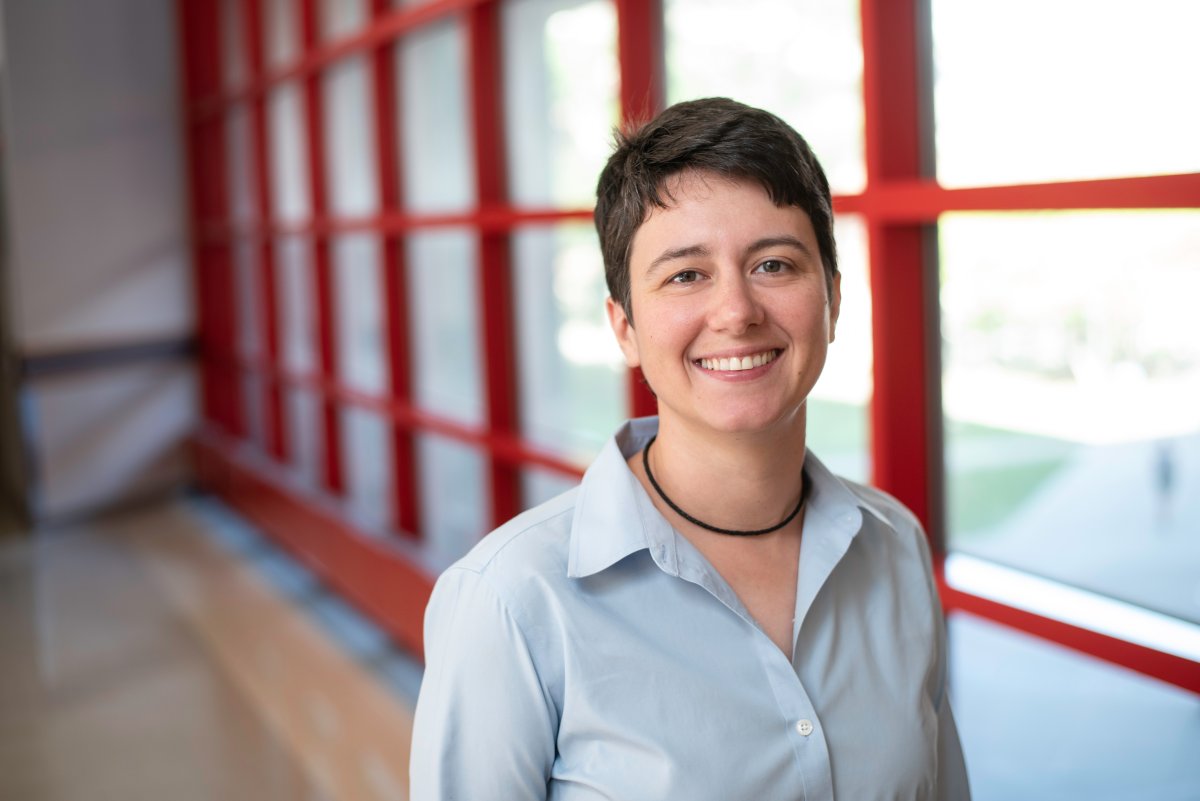Meet the Faculty - Lana Yarosh

Tell us about your journey to the University of Minnesota.
I first got into computer science in high school because of a scheduling error. It turned out to be an ultra fun class and I realized that computer science is all about puzzles and I thought that was really cool. Heading into college at the University of Maryland, I knew I wanted to study computer science and combine it with something else but I didn’t know what at the time. I landed on psychology.
Within that intersection of psychology and computer science, my options were things like computational linguistics, artificial intelligence, or human-computer interaction. At that time, human-computer interaction was really expanding and doing some cool things, so I started to get involved with research and looked at grad schools where I could get a Ph.D. in human-computer interaction. That search led me to Georgia Tech. After completing my Ph.D., I worked at AT&T Labs Research for about two years. I found that I really enjoyed the summers when I had interns to train and teach, and I realized that I should have that portion be a bigger part of my job. So I started applying to academic jobs.
I had not even been to Minnesota before I came out for an interview. I immediately felt a sense of connection with the people in this Department and it felt like a more progressive and welcoming place to live. The Department really operated around consensus and valuing everyone’s opinion which I think is super important. Plus there were already a few established faculty members focusing on human-computer interaction. In the end, I had a gut feeling that Minnesota was the right place for me.
We would love to hear more about your research!
I’m broadly interested in human-centered computing, and specifically embodied interaction or systems that have physical components. My projects focus on bringing the aspects of how people move and interact in the real world into digital spaces. I apply these embodied interaction principles to social computing, or systems that are meant to connect people to help increase social relationships.
More recently, I have been focusing on social connectedness in terms of health. I am working in the substance use disorder area and focusing on online communities. People are more likely to achieve long-term recovery if they find connection somewhere. Computing technologies have an opportunity and responsibility to help. Substance abuse disorders are one of the defining challenges of our generation. For people 18-44, the most likely cause of death is opioid overdose, and that’s not counting alcohol or other drugs. That is a space I am very passionate about. We have worked on wearables or ambient displays in a home to help people track their recovery process and identify and track the activities that are helping recovery. Additionally, we work on systems of social support like peer mentorship. This aspect has become hugely important during COVID when groups could not meet in person and has amplified the role of computing resources in the recovery process.
What do you hope to accomplish with this work? What is the real-world impact for the average person?
The ideal is to build systems that are available for everyone to use and help people recover from substance abuse disorder. Even more broadly, our system’s goal is to help people feel connected and reduce loneliness and social isolation.
What courses do you teach? What can students expect to get out of your course?
The course I most frequently teach is CSCI 5115 - User Interface Design, Implementation, and Evaluation. Students taking that course can get an overview of how human-computer interaction principles inform user-experience design and how that might be used in industry or research. In the course, students follow a user-centered design process all the way through. They come up with an idea for an app by doing interviews with users. They sketch out the app and develop low-fidelity prototypes that can be quickly tested with a small group of users. And then they build the app and evaluate the app based on the criteria they are measuring. It is a large team-based project and it’s very realistic to how work might happen out in the field. Students can expect to work very hard in class with their team and watch lectures outside of class.
What do you like about teaching?
I like that the students always surprise me. Every year there are new ideas that I had never thought about. There are always a few teams that go way beyond the criteria and build something awesome. That’s my favorite part - seeing that passion and effort.
What do you do outside of the classroom for fun?
I am a maker. I like making things. Recently as a new parent I have been making a lot of toys. I enjoy everything from wood working, 3D printing, crocheting, electronics. With those skills, you can really make just about anything.
Favorite spot in the Twin Cities?
Near campus, I love Al’s Breakfast. It’s the best breakfast in town. I also like Can Can Wonderland and I’m going to have my 40th birthday there.
Is there anything else that you would like students to know?
A big thing that I am working on is integrating ethics into the computer science curriculum for both undergraduate and graduate students. I also have a new research project that is examining how research in online communities can be more ethical. If students are interested in doing research within that ethics space, they should reach out to me!